
British Cameroon or the British Cameroons was a British mandate territory in British West Africa, formed of the Northern Cameroons and Southern Cameroons. Today, the Northern Cameroons forms parts of the Borno, Adamawa and Taraba states of Nigeria, while the Southern Cameroons forms part of the Northwest and Southwest regions of Cameroon.

Frederick John Dealtry Lugard, 1st Baron Lugard, known as Sir Frederick Lugard between 1901 and 1928, was a British soldier, mercenary, explorer of Africa and a colonial administrator. He was Governor of Hong Kong (1907–1912), the last Governor of Southern Nigeria Protectorate (1912–1914), the first High Commissioner (1900–1906) and last Governor (1912–1914) of Northern Nigeria Protectorate and the first Governor-General of Nigeria (1914–1919).

Northern Nigeria was a British protectorate which lasted from 1900 until 1914 and covered the northern part of what is now Nigeria.

Southern Nigeria was a British protectorate in the coastal areas of modern-day Nigeria formed in 1900 from the union of the Niger Coast Protectorate with territories chartered by the Royal Niger Company below Lokoja on the Niger River.

The Chilembwe uprising was a rebellion against British colonial rule in Nyasaland which took place in January 1915. It was led by John Chilembwe, an American-educated Baptist minister. Based around his Church in the village of Mbombwe in the south-east of the protectorate, the leaders of the revolt were mainly from an emerging black middle class. They were motivated by grievances against the colonial system including forced labour, racial discrimination, and new demands imposed on the indigenous population following the outbreak of World War I.

Indirect rule was a system of governance used by imperial powers to control parts of their empires, particularly used by colonial empires like the British Empire to control their possessions in Africa and Asia, which was done through pre-existing indigenous power structures. Indirect rule was used by various colonial rulers: the French in Algeria and Tunisia, the Dutch in the East Indies, the Portuguese in Angola and Mozambique and the Belgians in Rwanda and Burundi. These dependencies were often called "protectorates" or "trucial states". By this system, the day-to-day government and administration of areas both small and large were left in the hands of traditional rulers, who gained prestige and the stability and protection afforded by the Pax Britannica, at the cost of losing control of their external affairs, and often of taxation, communications, and other matters, usually with a small number of European "advisors" effectively overseeing the government of large numbers of people spread over extensive areas.

Bussa's rebellion was the largest slave revolt in Barbadian history. The rebellion takes its name from the African-born slave, Bussa, who led the rebellion. The rebellion, which was eventually defeated by the colonial militia, was the first of three mass slave rebellions in the British West Indies that shook public faith in slavery in the years leading up to the abolition of slavery in the British Empire and emancipation of former slaves. It was followed by the Demerara rebellion of 1823 and by the Baptist War in Jamaica in 1831–1832; these are often referred to as the "late slave rebellions".
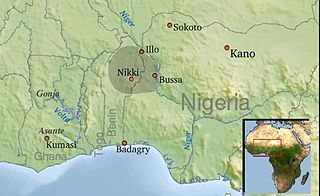
Borgu is a region in north-west Nigeria and in the northern Republic of Benin. It was partitioned between Great Britain and France by the Anglo-French Convention of 1898. People of Borgu are known as Bariba or Borgawa.
The Aba Women's Riots of 1929 was a period of unrest in colonial Nigeria over November 1929. The protests broke out when thousands of Igbo women from the Bende District, Umuahia and other places in southeastern Nigeria traveled to the town of Oloko to protest against the Warrant Chiefs, whom they accused of restricting the role of women in the government. The protest, though started by Igbo women, later encompassed women of the ethnic groups.
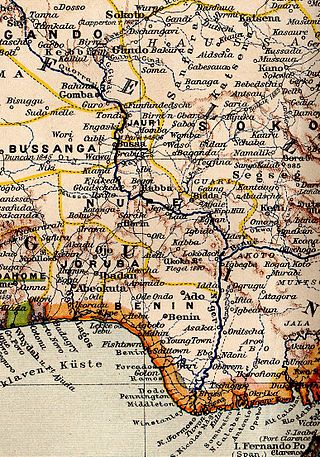
Bussa, also known as Boussa in older texts, was the capital of northern Borgu, in northern Nigeria. It was the farthest navigable point on the Niger River, just above the rapids. The town site is now covered by Lake Kainji, which was created in 1968 with the construction of the Lake Kainji dam. The town was re-located to what is now called New Bussa.

The African Theatre of the First World War comprises campaigns in North Africa instigated by the German and Ottoman empires, local rebellions against European colonial rule and Allied campaigns against the German colonies of Kamerun, Togoland, German South West Africa, and German East Africa. The campaigns were fought by German Schutztruppe, local resistance movements and forces of the British Empire, France, Italy, Belgium, and Portugal.

Henri-Etienne Bretonnet was a French naval officer, killed with most of his men in the battle of Togbao.

Colonial Nigeria was ruled by the British Empire from the mid-nineteenth century until 1960 when Nigeria achieved independence. British influence in the region began with the prohibition of slave trade to British subjects in 1807. Britain annexed Lagos in 1861 and established the Oil River Protectorate in 1884. British influence in the Niger area increased gradually over the 19th century, but Britain did not effectively occupy the area until 1885. Other European powers acknowledged Britain's dominance over the area in the 1885 Berlin Conference.
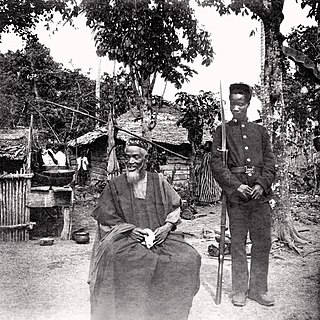
The Hut Tax War of 1898 was a resistance in the newly annexed Protectorate of Sierra Leone to a new tax imposed by the colonial governor. The British had established the Protectorate to demonstrate their dominion over the territory to other European powers following the Berlin Conference of 1884–1885. The tax constituted a major burden on residents of the Protectorate; 24 indigenous chiefs had signed a petition against it, explaining its adverse effects on their societies, to no avail. The immediate catalyst for hostilities was an attempt by British colonial officials to arrest the Temne chief Bai Bureh, a general and war strategist, on the basis of rumours. Although often depicted as the chief who initiated an armed resistance in the North in 1898, late 20th-century sources suggest he was unfairly identified by the colonial government as a primary instigator, with the government's hostile actions provoking the war. Later that year, resistance arose in the south by the leading Mende.
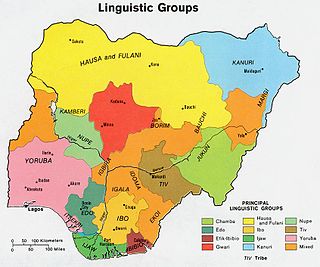
A Sabon Gari is a section of cities and town in Northern Nigeria South Central Niger and Northern Cameroon whose residents are not indigenous to Hausa lands.

Sir Herbert Richmond Palmer was an English barrister, who became a colonial supervisor for Britain during the inter-World War period. He served as a lieutenant governor in Nigeria, governor and Commander-in-Chief of The Gambia and governor and Commander-in-Chief of Cyprus.

The Adamawa Wars (1899–1907) were initially a series of military expeditions and border conflicts between the German Schutztruppe in Kamerun and the Fula Sunni Muslim states and tribes that were a part of the Sokoto Empire, particularly the Emirate of Adamawa in the northern half of the region. After these territories were annexed major resistance continued for years and several uprisings occurred.
Coromantee, Coromantins, Coromanti or Kormantine is an English-language term for enslaved people from the Akan ethnic group, taken from the Gold Coast region in modern-day Ghana. The term was primarily used in the Caribbean and is now considered archaic.

The Kamerun campaign took place in the German colony of Kamerun in the African theatre of the First World War when the British, French and Belgians invaded the German colony from August 1914 to March 1916. Most of the campaign took place in Kamerun but skirmishes also broke out in British Nigeria. By the Spring of 1916, following Allied victories, the majority of German troops and the civil administration fled to the neighbouring neutral colony of Spanish Guinea. The campaign ended in a defeat for Germany and the partition of its former colony between France and Britain.
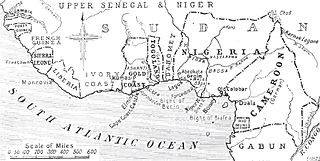
The Adubi War was a conflict in June and July 1918 in the British Colony and Protectorate of Nigeria ostensibly because of the imposition of colonial taxation. Direct taxes were introduced by the colonial government along with existing forced labour obligations and fees. On 7 June, the British arrested 70 Egba chiefs and issued an ultimatum that resisters should lay down their arms, pay the taxes and obey the local leadership.



















